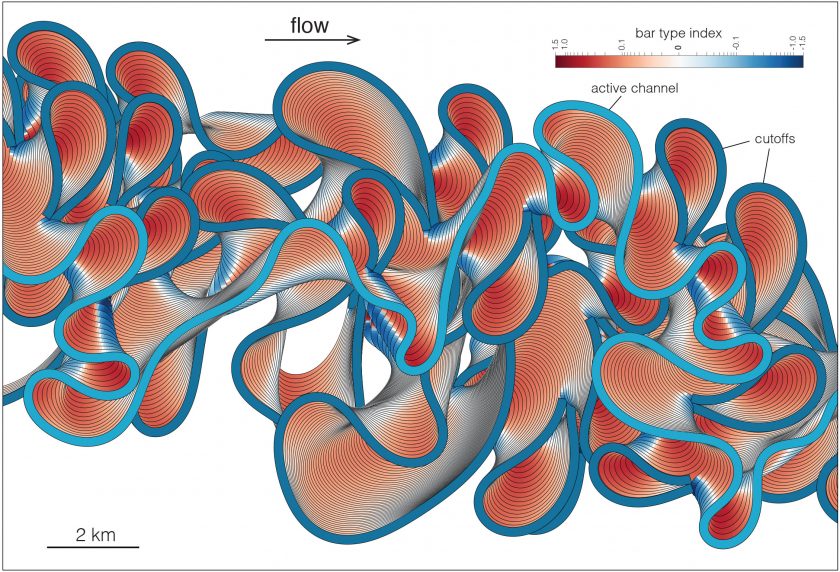Creating Counterpoints
October 29, 2021

It’s not uncommon for crescent-shaped swaths of sand to dot the shorelines of meandering rivers. These swaths usually appear along the inner side of a river bend, where the bank wraps around the sandy patch, forming deposits known as point bars. When they appear along an outer bank, which curves the opposite way, they form counter-point bars, which are usually interpreted by geoscientists as an anomaly: a sign that something — such as a patch of erosion-resistant rocks — is interfering with the river’s usual manner of sediment deposition.
But according to research led by the Jackson School of Geosciences, counter-point bars are not the oddities they’re often made out to be. In fact, they’re a perfectly normal part of the meandering process.
“You don’t need a resistant substrate. You can get beautiful [counter-point] bars without it,” said Zoltan Sylvester, a research scientist at the Bureau of Economic Geology who led the study.
The finding suggests that counter-point bars — and the unique geology and ecology associated with them — are more common than previously thought. Building awareness around that fact can help geoscientists be on the lookout for counter-point bars in geological formations deposited by rivers in the past and understand how they may be influencing the flow of hydrocarbons and water passing through them.
The research was published in the Geological Society of America Bulletin in March 2021. This is not the first time that Sylvester’s research has revealed that river behavior can be governed by relatively simple rules. In 2019, he led a study published in Geology that described a direct relationship between bend sharpness and river migration.
Back to the Newsletter